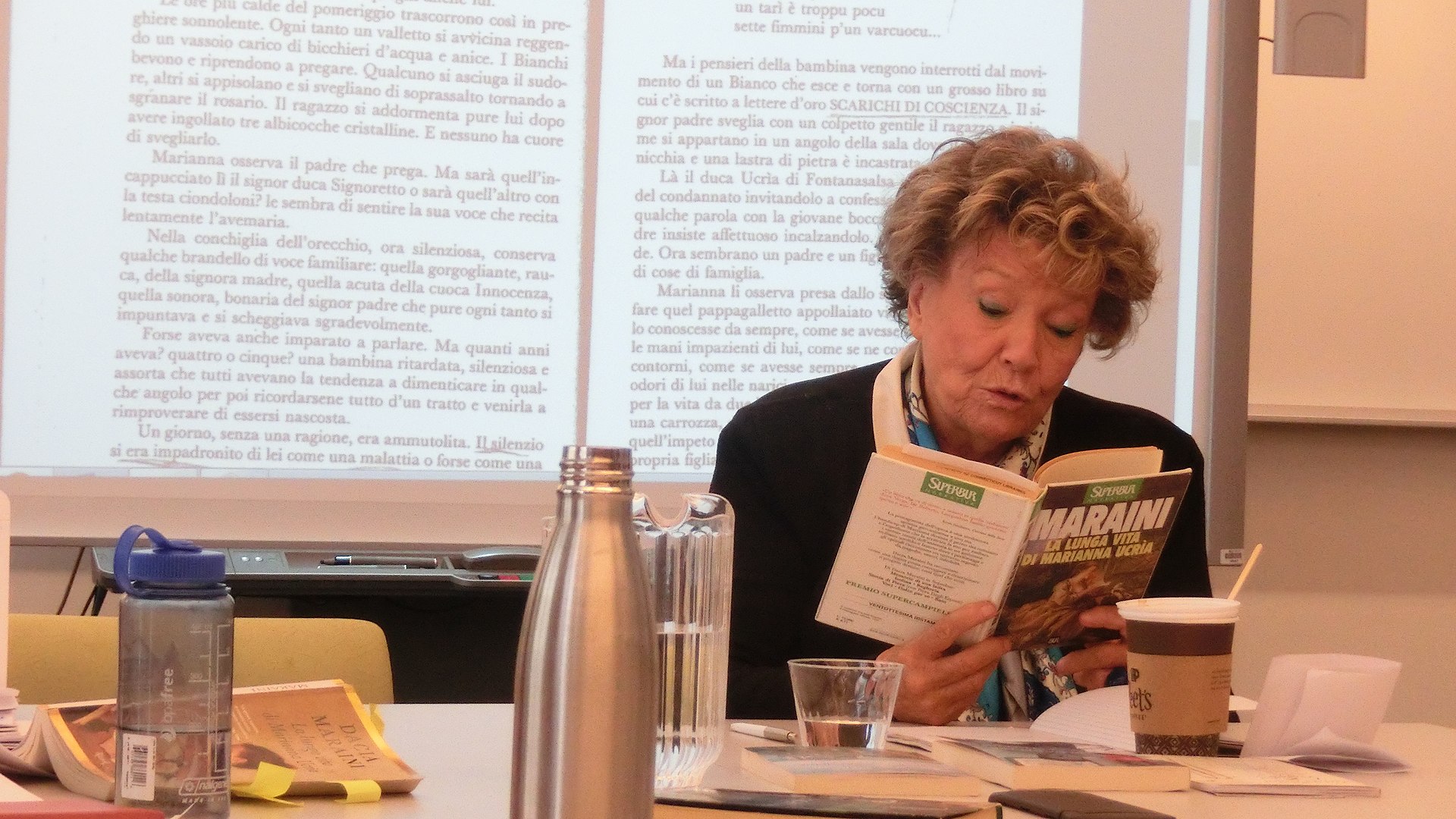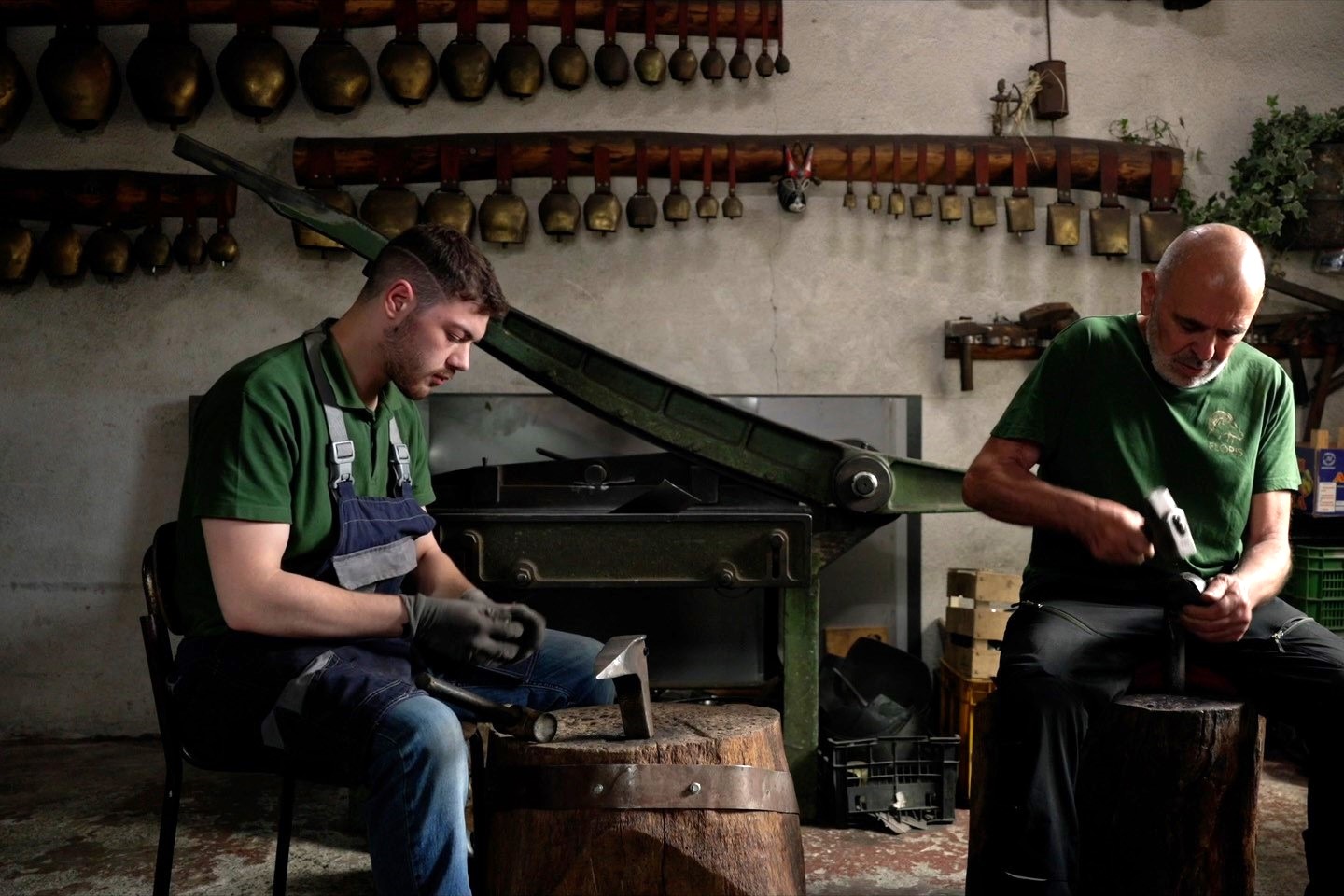Part of the generation of the 30s, Dacia Maraini is more than just a writer: in fact, as she took part to the group of intellectuals, she is now ranked with some of the best-known authors of Italian literature.
A poet, an essayist, a playwright, and a screenwriter, but most of all a woman who has been able to give voice to other women, besides the ages they belonged to and the life they lived. During an event organized by the Italian Cultural Institute and the Leonardo da Vinci Society, Dacia explored the protagonist of one of her books, Chiara of Assisi: In Praise of Disobedience, and walked the audience through the extraordinary decision to live a life of poverty and sacrifice.
The journey along Chiara’s experience became even more fascinating for being told by a person who considered herself not-practising Christian. This also shows the ability to go beyond the traditional, well known biography and to surprise the reader with the story of a complicated relation with the Church, similar to the one of many people born and raised in a Christian country. The book is thought as an epistolary exchange with a young Chiara who asks the writer to tell about the Saint and report what is said in the diary of her life.
First of all, why and how did Chiara’s story become a source of inspiration?
At least three facts about Chiara’s life interested me. The first one is the fight between the Church and those who – like Chiara – wanted a reform. Secondly, the reclusion reminded me the experience during my childhood time in Japan: not only the reclusion as a status, but also the prison as a place. The visions and the dreams coming from this condition are very special: in the Middle Age, people could see angels and things that nobody can see. The third reason is poverty: what Chiara says about it, it’s not the praise of poverty but both a choice and a way to reach freedom. She was 18 when she went to the Pope and asked the privilege of poverty, disobeying to the Church’s rule. She had a political mind, practising democracy in the monastery and giving the example of how to be humble. She always refused to give orders and punishments: that was her personal revolution.
In the book, the young Chiara asks you to give voice to “The woman who wasn’t there”. What does that mean?
Young Chiara says “I don’t know who I am”, wants to understand that woman from the past and, starting from there, learn more about herself. They are both virgin, they are afraid of sex, and they refuse food. Of course, the reason behind the old Chiara’s choices are related to the fact she wants to be close to Christ. When I started reading books about Chiara and the Middle Age, I found the idea of being faithful very interesting and dangerous. For example, as soon as she joined the monastery, she couldn’t go out anymore but people kept visiting her. She was considered a saint before the Church recognized her that way: she dies in August and in October she became saint.
Where did you get the details about Chiara’s life?
A book from a small publishing company collected the sisters’ testimony about Chiara’s life. Many details came from there, such as the one that no animals but cats were allowed in the monastery. Among those cats, there was a little one, called la gattuccia, that became Chiara’s best friend. It is said that, while she was paralysed in her legs, the only thing she could do was to embroider. One time, she was looking for more clothes and, as nobody could hear what she was saying, Chiara asked the little cat. Since la gattuccia brought her what needed, it was considered one of Chiara’s miracle.
What’s your idea about Francis and Chiara’s friendship?
Unlike many think, she was not an appendix of Francis. They had some stuff in common: for example, they both belong to wealthy families and they wanted to take the Church back to the gospel. They were part of a culture which wanted to reform the Church from inside, without destroying it. This was the real revolution that brought to a fight with the Pope. Their background was similar too: the mother of Francis was French and full of an innovative culture. The mother of Chiara belonged to an important family too, but very advanced in ideas. They met, they shared the same thoughts, and immediately became friends.
How can the old Chiara be useful for a young, modern Chiara?
I think that many characters from the past can be a model for young people today. For instance, the importance of coming back to the sacredness of the person relates to Chiara’s decision of refusing property which is mainly a refusal of possession. This is the way she can be, for instance, considered modern.






























